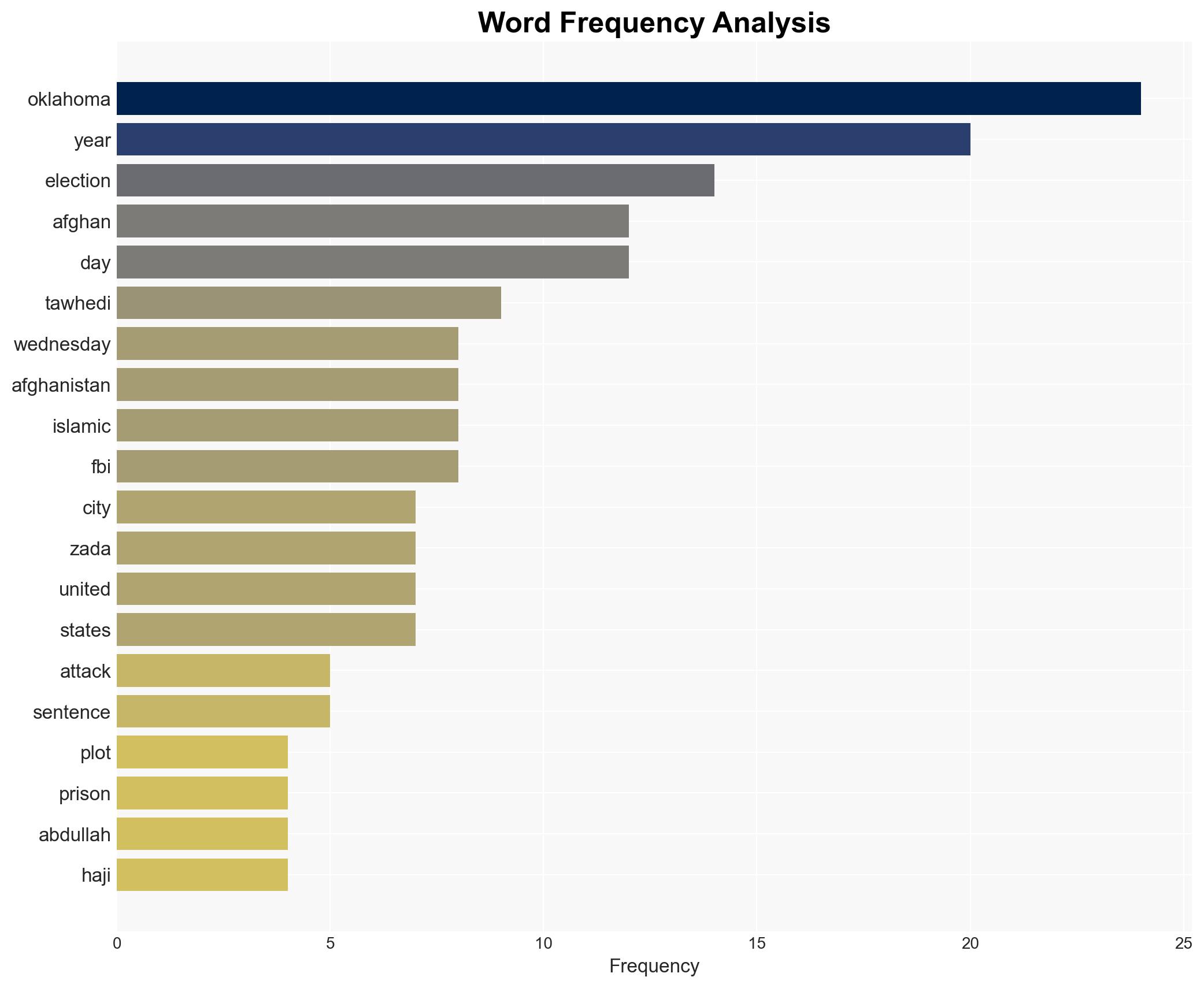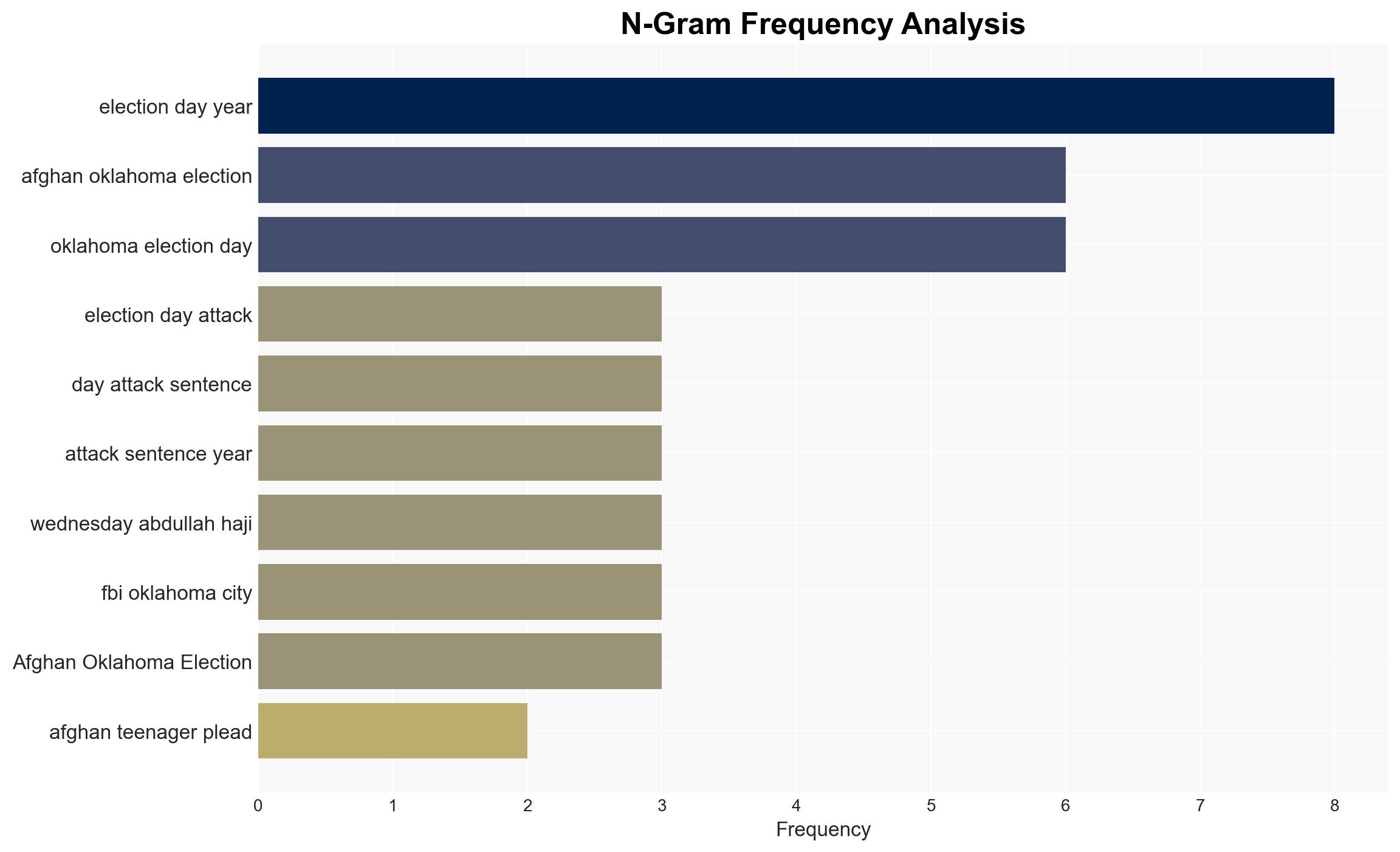Afghan teenager charged in Oklahoma plot for Election Day attack sentenced to 15 years – ABC News
Published on: 2025-11-20
AI-powered OSINT brief from verified open sources. Automated NLP signal extraction with human verification. See our Methodology and Why WorldWideWatchers.
Intelligence Report:
1. BLUF (Bottom Line Up Front)
The most supported hypothesis is that the plot was primarily motivated by allegiance to ISIS, with the intent to carry out a high-profile attack to gain recognition within the group. Confidence level is moderate due to limited public evidence on the depth of their operational capability and external support. Recommended action includes enhancing monitoring of radicalization channels and strengthening community engagement programs to prevent similar plots.
2. Competing Hypotheses
Hypothesis 1: The plot was primarily motivated by allegiance to ISIS, aiming to execute a high-profile attack to gain recognition and further the group’s objectives.
Hypothesis 2: The plot was driven by personal grievances or psychological issues, with ISIS affiliation serving as a convenient justification rather than a primary motivator.
Hypothesis 1 is more likely given the evidence of communication with ISIS-linked accounts and the swearing of allegiance, indicating ideological commitment. Hypothesis 2 is less supported due to the lack of evidence suggesting personal grievances or psychological instability as primary drivers.
3. Key Assumptions and Red Flags
Assumptions: It is assumed that the communication with ISIS-linked accounts was genuine and not fabricated or exaggerated by the defendants. It is also assumed that the defendants had the capability and intent to carry out the attack.
Red Flags: The use of Telegram, a platform known for encrypted communications, suggests attempts to conceal activities. The rapid plea agreement and sentencing could indicate undisclosed cooperation or intelligence considerations.
Deception Indicators: The possibility of exaggerating ISIS connections to gain notoriety or leniency should be considered.
4. Implications and Strategic Risks
The plot highlights the persistent threat of homegrown violent extremism and the potential for radicalization within refugee or immigrant communities. There is a risk of political backlash and stigmatization of these communities, which could exacerbate tensions and hinder integration efforts. The use of encrypted communication platforms poses ongoing challenges for intelligence and law enforcement agencies in preemptively identifying and disrupting plots.
5. Recommendations and Outlook
- Enhance monitoring of online radicalization channels and encrypted communications to identify potential threats early.
- Strengthen community engagement and counter-radicalization programs, particularly within immigrant and refugee communities, to build trust and cooperation.
- Best-case scenario: Increased community cooperation and effective monitoring lead to early detection and prevention of similar plots.
- Worst-case scenario: Failure to address underlying issues results in further radicalization and successful attacks.
- Most-likely scenario: Continued sporadic plots with varying degrees of sophistication and success.
6. Key Individuals and Entities
Abdullah Haji Zada, Nasir Ahmad Tawhedi, Islamic State (ISIS), FBI Special Agent Doug Goodwater.
7. Thematic Tags
Structured Analytic Techniques Applied
- ACH 2.0: Reconstruct likely threat actor intentions via hypothesis testing and structured refutation.
- Indicators Development: Track radicalization signals and propaganda patterns to anticipate operational planning.
- Narrative Pattern Analysis: Analyze spread/adaptation of ideological narratives for recruitment/incitement signals.
Explore more:
Counter-Terrorism Briefs ·
Daily Summary ·
Support us





